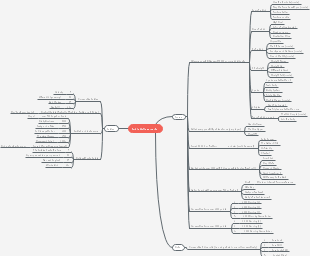MindMap Gallery Reading and Memory
- 395
- 5
- 4
Reading and Memory
According to one study, mental stimulation like reading can help protect memory and thinking skills, especially as you age.
Edited at 2020-09-24 07:38:57- Mind Map Kingdom
Mind maps are a great resource to help you study. A mind map can take complex topics like plant kingdom and illustrate them into simple points, as shown above.
- Team Communication Strategies
Mind maps are useful in constructing strategies. They provide the flexibility of being creative, along with the structure of a plan.
- Types of Vitamins
Vitamins and minerals are essential elements of a well-balanced meal plan. They help in ensuring that the body is properly nourished. A mind map can be used to map out the different vitamins a person requires.
Reading and Memory
- Mind Map Kingdom
Mind maps are a great resource to help you study. A mind map can take complex topics like plant kingdom and illustrate them into simple points, as shown above.
- Team Communication Strategies
Mind maps are useful in constructing strategies. They provide the flexibility of being creative, along with the structure of a plan.
- Types of Vitamins
Vitamins and minerals are essential elements of a well-balanced meal plan. They help in ensuring that the body is properly nourished. A mind map can be used to map out the different vitamins a person requires.
- Recommended to you
- Outline
Reading and Memory
Slow Reading (traditional reading and memory)
Slow reading process
Text stimulation
Conversion information
To the visual center of the brain (processing)
(After processing) Transfer to the language center
To the auditory center
To the memory center
This is a process of reading to yourself, even in high-level silent reading, but the external movements are better controlled.(Therefore, when most people are reading (using traditional reading methods), they are actually "reading" instead of actually "reading")
Speed Reading (fast reading and memory)
Fast reading process (eyes and brains directly reflected)
Text stimulus (form an image)
The text information seen by the eyes enters the brain center in parallel
Image memory
Parse image text information
It is clear at a glance. Compared with the traditional reading memory, the fast reading memory has crossed the language center and hearing. The memory center has a series of cumbersome memory procedures, which truly achieves the fast and efficient memory.
Basic methods and principles
Expand horizon
Move focus quickly
Lateral movement
When we can see a few or dozens of words clearly at a glance after expanding the field of vision, it is extremely important for the training focus to move quickly and accurately to the position of the second eye.
Lateral speed increase
The speed-up focus quickly and accurately moves laterally to the lateral second eye position
Lay a solid foundation to increase speed
Vertical movement
When you can see a paragraph clearly
The training focus quickly and accurately moves longitudinally to the position of the second eye in the longitudinal direction
Longitudinal speed increase
Speed up the vertical movement of the focus
Lay a solid foundation for multiple lines and one page
Overcome silent reading and pronunciation
Control the volume of pronunciation mechanically and compulsorily
Tongue-to-lip method
Mouth substance method
Speech Movement and Speech Impairment Method
While reading the article silently, compulsorily read aloud other materials that have nothing to do with it
Language Center Obstacle Method, also called rhythm beat method
Silent thinking
Silent reading
Read the reading materials silently, and do not make the reading materials occupy the thinking, so that the reading materials are called things that only occupy the pronunciation organs and do not consume too much mental energy
The first stage
Use speed to shake off the pronunciation
When fast reading reaches a certain level of proficiency, the cumbersome process of pronunciation and reading of the material will be discarded, and the brain will have the desire to read the material without the process of pronunciation, and achieve a silent reading state.
The second stage
Suppress the rebound phenomenon during reading
Quickly extract keywords
Find a small secret of the central topic
Find the predicate verb corresponding to the object of the statement (the main concept)
Combine the extracted key words or short sentences into sentences (subject-predicate structure)
Check whether the key words and phrases extracted can clearly and completely express the overall information of the material









